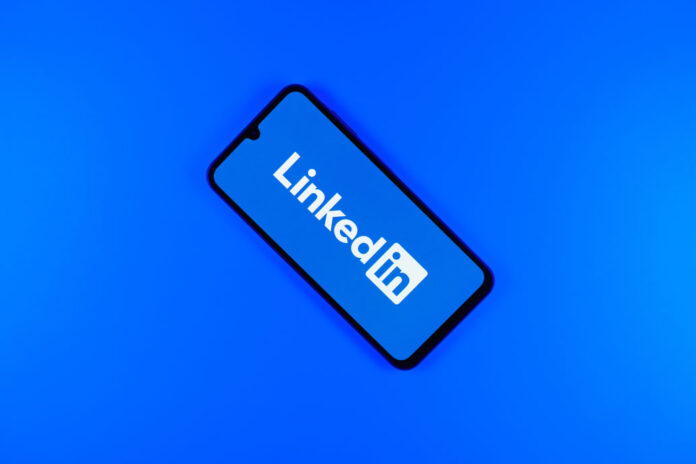No Dia da Internet Segura, celebrado globalmente no dia 11 de fevereiro, o LinkedIn, maior rede social profissional do mundo, reforça seu compromisso em ajudar profissionais a se protegerem durante a busca por emprego online. Reconhecida em mais de 100 países, a mobilização deste ano tem como tema “Educação para a Cidadania Digital” e visa capacitar a sociedade para a utilização do ambiente digital de forma crítica, ética e responsável.
Em um cenário onde a procura por novas oportunidades de trabalho está cada vez mais digitalizada, o tema é especialmente importante para os brasileiros, já que em 2025, 3 em cada 5 profissionais planejam mudar de emprego e 65% dos(as) usuários(as) da plataforma no País afirmam utilizar o LinkedIn para essa função. Para que esse processo ocorra de forma segura e sem imprevistos, é essencial que adotem práticas que protejam suas informações pessoais, garantindo que a busca por uma nova carreira se desenvolva de maneira tranquila e sem riscos.
Entre os esforços do LinkedIn para garantir a segurança de seus usuários e usuárias, destaca-se a ferramenta de verificação de perfil, que pode ser usada para confirmação de identidade e gera um selo visível nos perfis de forma gratuita, mostrando que aquela conta foi autenticada é, de fato, idônea.
“No LinkedIn, exigimos que cada perfil represente uma pessoa real e temos políticas claras que proíbem perfis falsos. Para isso, as equipes de Confiança e Segurança trabalham todos os dias identificando e restringindo atividades não autênticas. Uma das formas utilizadas para garantir que as contas sejam verdadeiras é o Sistema de Detecção Automatizado em Escala, em que mais de 97% das contas falsas são identificadas e removidas da plataforma”, explica Milton Beck, Diretor Geral do LinkedIn para a América Latina.
Para melhorar ainda mais a busca por empregos e a utilização geral da rede, o LinkedIn listou algumas dicas para tornar a usabilidade da plataforma ainda mais segura:
1- Desconfie de ofertas boas demais para serem verdade: pessoas mal intencionadas costumam atrair suas vítimas com promessas tentadoras, como, por exemplo, salários acima da média para funções básicas. Se a proposta parecer irreal, vale a pena pesquisar mais informações sobre a empresa e até mesmo se conectar com outros funcionários para entender mais sobre a oportunidade.
2- Cuidado com pedidos suspeitos: não é comum que recrutadores confiáveis solicitem que o(as) usuário(a) faça o download de arquivos criptografados para entrevistas. Esse pedido deve reforçar a atenção do(a) candidato(a). Além disso, tenha cuidado com supostas vagas que exigem pagamento antecipado para cursos, materiais ou inscrições e nunca forneça dados bancários na plataforma.
3- Pesquise sobre a empresa, recrutador(a) e vaga: é importante confirmar se a empresa possui uma página verificada no LinkedIn, selo que indica que a organização passou por um processo de autenticação. Além disso, existem formas de checar se o(a) recrutador(a) está realmente vinculado(a) à empresa, como a análise do seu perfil e conexões, por exemplo. Muitas empresas costumam divulgar vagas diretamente em seus canais oficiais, por isso, é sempre válido comparar as informações.
4- Para garantir uma busca mais segura, o LinkedIn oferece ferramentas como:
- Filtro de vagas verificadas – permite visualizar apenas oportunidades postadas por empresas com perfis autenticados.
- Mensagens com alerta de risco – o LinkedIn pode sinalizar mensagens que contêm conteúdos suspeitos.
- Verificação em duas etapas ''' esse recurso adiciona uma camada extra de segurança à conta, reduzindo o risco de acessos não autorizados.
5- Denuncie atividades suspeitas: ao identificar uma vaga ou mensagem suspeita, a denúncia pode ser feita diretamente na plataforma. O LinkedIn mantém uma equipe dedicada a investigar possíveis fraudes e a garantir um ambiente mais seguro para profissionais em busca de novas oportunidades.
Procurar emprego exige cautela, mas com as ferramentas certas e atenção redobrada, é possível encontrar boas oportunidades sem cair em armadilhas. Além disso, o LinkedIn continua investindo em ferramentas para garantir um ambiente seguro e confiável para profissionais ao redor do mundo. Para saber mais sobre as iniciativas de segurança da plataforma, acesse.


